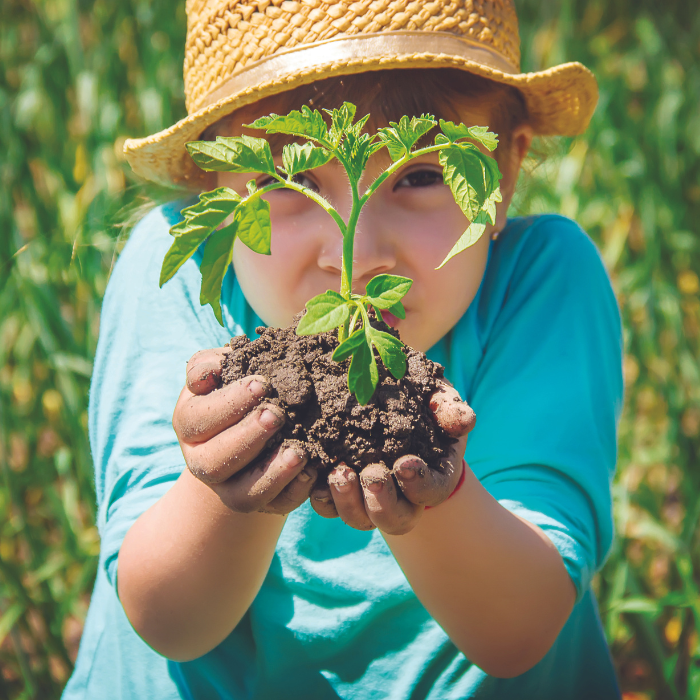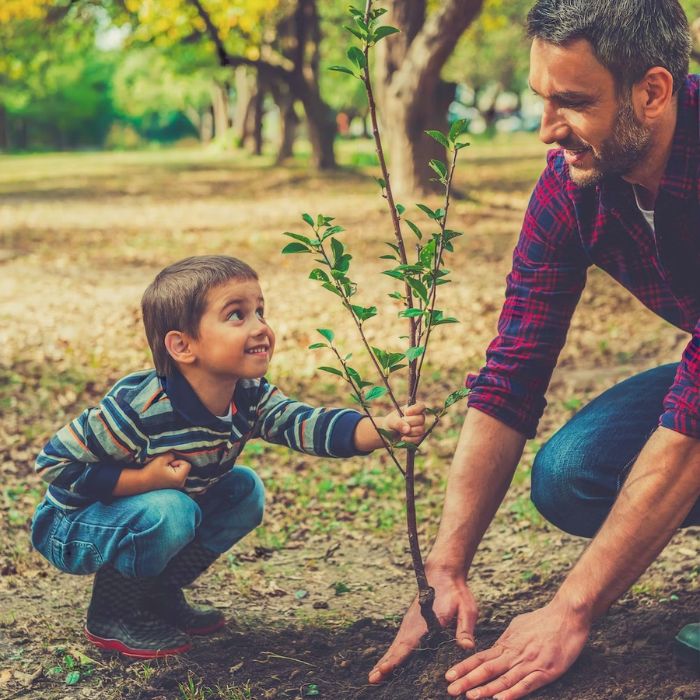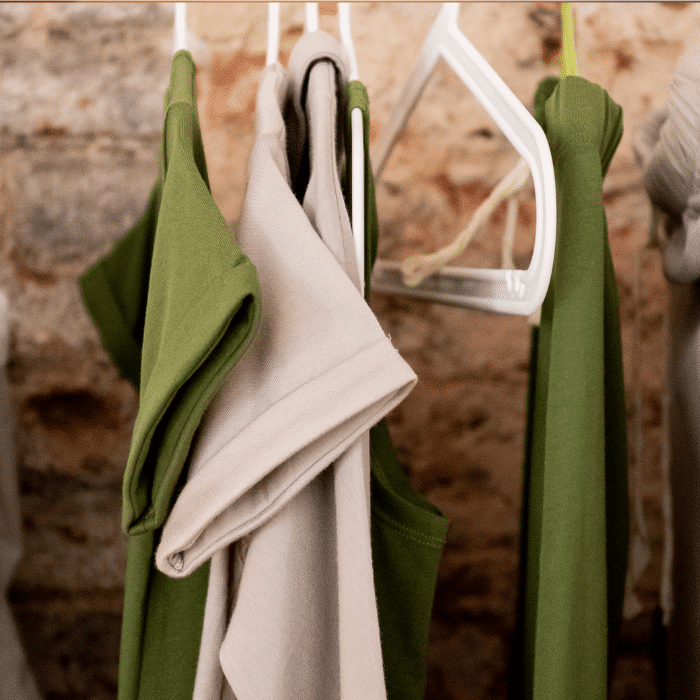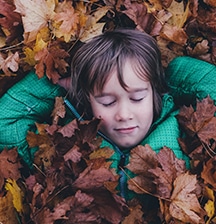
Simplifying what children have not only makes like easier and reduces your impact, but can foster creativity, explains Nicola Turner.
When I think about reducing my impact, raising eco-conscious kids is actually a massive part of what I can contribute. If I can do my bit to enable two more humans in the world to make a difference, then I’ll be stoked. My mission is to instil in my kids an understanding of how everything is connected, and an awareness of the impact that our actions have on other people and the world. I want my kids to appreciate the true value of things, people and experiences (along with all the other parental goals of having happy, healthy and content offspring). I’ve been told that I’m lucky I started this journey when my kids were young – and maybe I was. But I don’t feel like I’d do it any differently if they were older. I role model what I believe is right and bring them with me on the journey. I explain to them why I do things and why I make the choices I do, and I encourage them to ask questions. I don’t hide alternatives from them (okay, sometimes, I intentionally walk the other way to avoid free balloons) but would rather they understand what choices there are and why we choose what we do. They don’t always get it but I’m surprised at how often they do. I also find that kid-splaining things helps to keep things straight in my own head! I’m figuring out that a large part of any parenting journey is learning to let go.
As my kids get older and more independent, enabling them to have the right mindset makes me feel like they’re more likely to go out into the world and make conscious decisions. We talk about the decisions they make and I try, with all my motherly might, to never guilt-trip them about any choices they’ve made. I think that I pull it off, most of the time. I don’t unnecessarily try to shelter them or stop them experiencing the realities of consumerism – they have been inside a shopping mall. I think it’s more important for them to be exposed to things and know how to navigate them. I also believe in the theory that what we do most of the time is what matters. Sometimes, I feel a bit like I’m going against the grain when I limit what my kids have – but when I let go of what other people think and reconnect with my ‘why’, I know I’m on track, and man, does it make life simpler.
The toy story
When it comes to toys, more is not more. There are only so many toys kids can play with. Research by toy supplier Dream Town found that the average 10-year-old owns 238 toys but plays with just 12 of them daily! It’s disturbing how many of them end up at the bottom of the toy box, unloved and forgotten. There’s also been a heap of studies that show how having fewer toys can inspire innovation and creativity. I see this creativity in my own kids. One day, a simple plank of wood kept my two kids amused for hours. It was a shop counter, flight control desk, keyboard and ramp for cars. I’m not saying we should replace all toys with planks of wood and a handful of rocks; I’ve just learned that it’s important to let play happen, instead of facilitating it.
Parenting hack
Always having a fresh stash of toys or books from the library entertains my kids for hours on the weeks. If you have older kids, consider a sharing or swapping circle with friends and family.
About the wardrobe
When I was growing up, I’m pretty sure I had three pairs of corduroy pants, two jumpers, four T-shirts and a party dress. I definitely had only one pair of shoes per season, plus some gumboots. It’s not that I went without, clothes just weren’t as easy to come by, and so, we only had what we needed. My kids have a few more clothes than that, but not by a lot. They don’t really need that much – they always end up wearing the same favourites anyway. I’m also amazed at my daughter’s creativity at pulling together different ensembles using the same few favourite items. And my son is happy alternating between his three superhero T-shirts and pairing that with any pair of shorts (no matter the season!)
Smart food swaps
The way we navigate school life is no different from what we do at home – we have lots of conversations and figure out alternatives and compromises together. We make better choices where we can. When my daughter starts comparing what she has to others, for instance, it’s a chance to have a conversation about the choices we make as a family.
Lunchbox: We bought stainless steel lunchboxes five years ago and they’re still going strong. I went for compartment-style ones and the kids also have lunch bags, so we can add other containers and ice packs when needed.
Food wrap: I use Beeswax Wraps to keep sandwiches and cut fruit fresh. When they start looking a bit manky, they go on an oven tray in a 100°C oven for two minutes.
And the school accessories
Drink bottle: We use stainless steel drink bottles because they don’t taint the water, unlike plastic. Yearh, they get dinged up, but they last for years.
Stationery: The first time I received a stationery list from school, we diligently went out and bought everything on it. Now, we don’t. We chat to the teachers about alternatives, bring home items from the previous year and reuse them, find items at home, and then fill in the gaps by buying where we need to.
Text extract from Living Lightly: The Busy Person’s Guide to Mindful Consumption by Nicola Turner (HarperCollins NZ, $45)








